Look, our thing is we build with big pieces of wood.
But it’s really not about the timber frame.
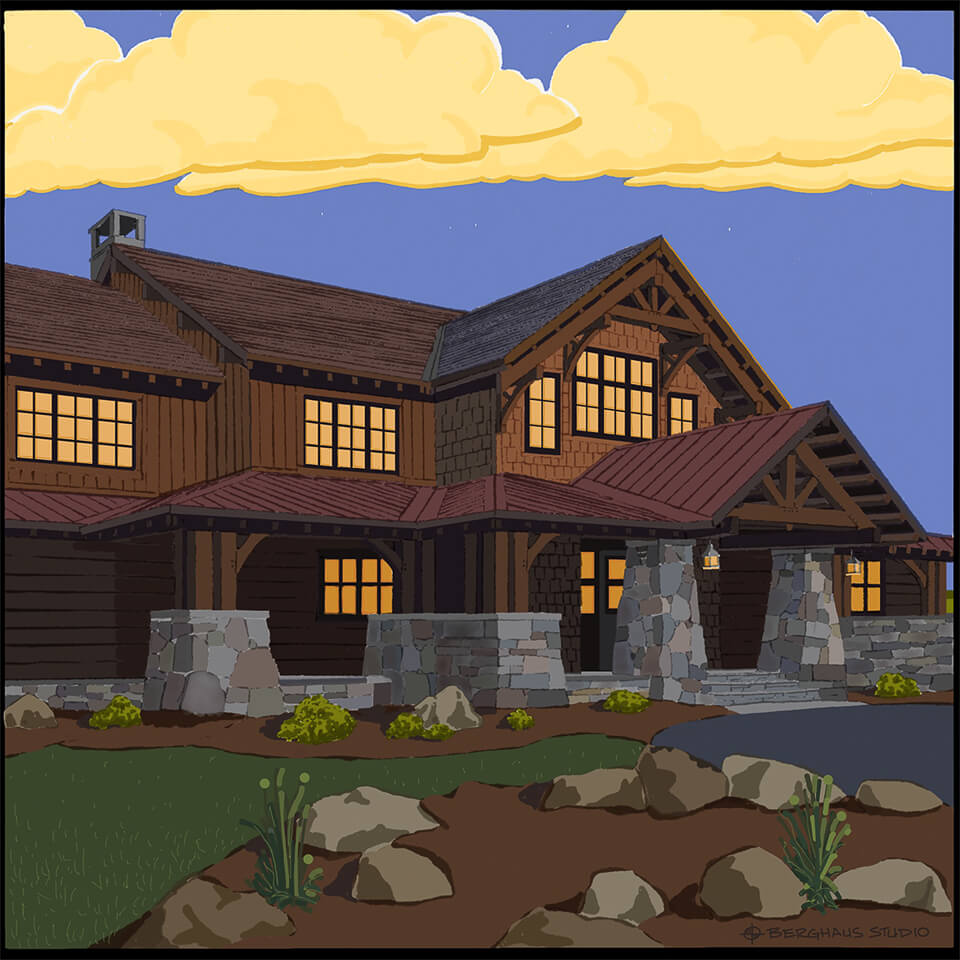
We’re creating a place where someone is going to live, hopefully for a very long time.
It’s about building homes that last, places filled with quality you can see and feel. This quality doesn’t happen by accident. It’s the result of meticulous design, exceptional craftsmanship, and above all, people who are passionate about their work.
We believe timber framing attracts these people.
Whether the whole home is timber framed, or only a part, timber framing brings along people dedicated to attention to detail and quality on a level that is simply uncommon in the construction industry.
So, why does this matter to you? Quality attracts quality. To use a musical analogy, through timber framing, each person involved, from architects to homeowners to tradespeople, play their part with more intention and care. They inspire each other to reach new heights. This harmony, this concerted effort, results in a more perfectly composed place to live your life.
We confess, we’re smitten with timber framing. We adore everything about it–the awe-inspiring beauty and scale, its time-honored traditions, and the time proven-durability that stands as a testament in some of the world’s oldest buildings. The thoughtful process; and especially the relationships born from collaborating with others who share our passion only add to its allure. Our love for timber framing translates into creating places that are more than dwellings–we help craft living art that people fall in love with. These buildings not only age gracefully but also embody the forward-thinking spirit of building with tomorrow in mind.
What Does a Timber Frame House Look Like From the Outside?
Seen from the outside, timber frame houses can be traditional or contemporary looking. Since the timber frame is on the inside, the exterior can be anything you like–from wood siding to brick to stone to corrugated matte-black metal siding.
To give you a sense for what’s possible, here’s what some of the timber frame homes we’ve worked on in North Carolina and beyond look like from the outside:
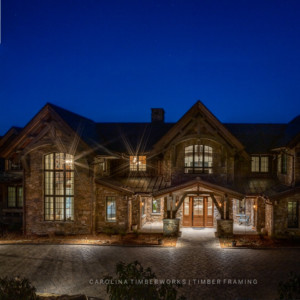
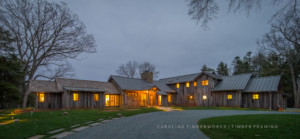
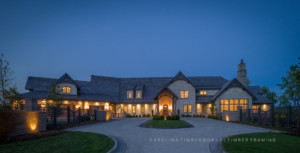
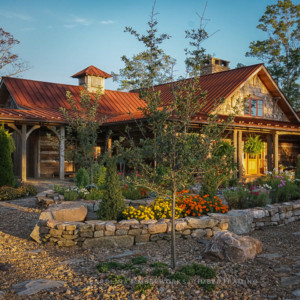
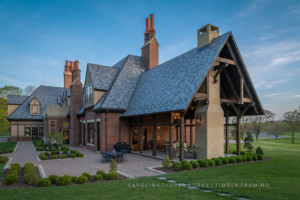
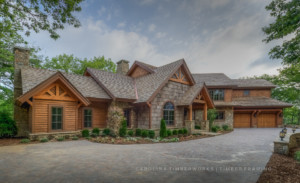
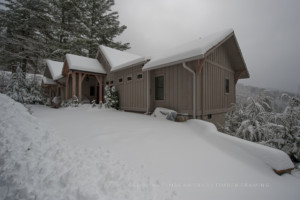

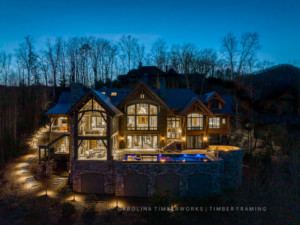
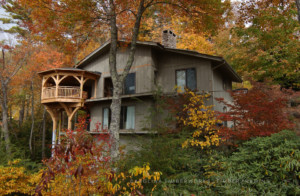

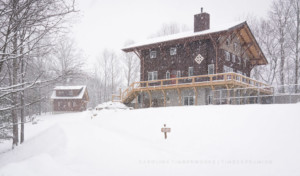
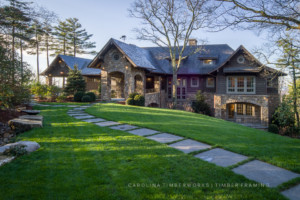
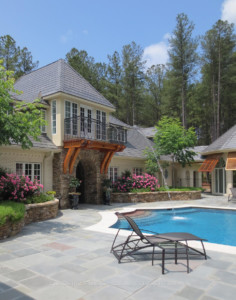
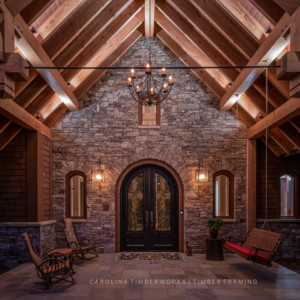
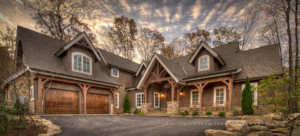
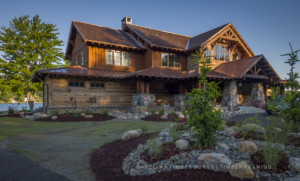
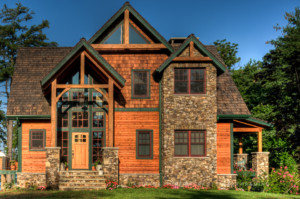
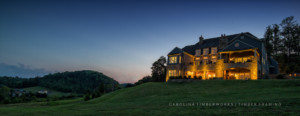
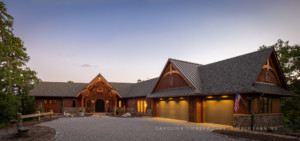
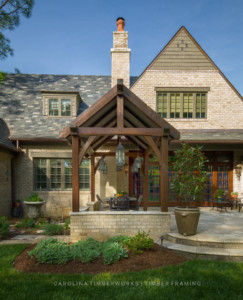
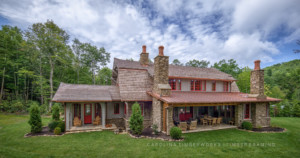
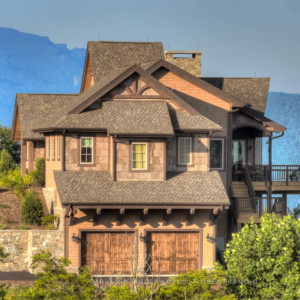
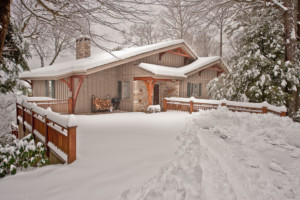
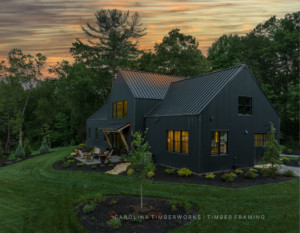
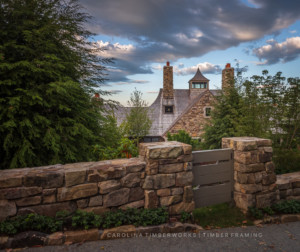
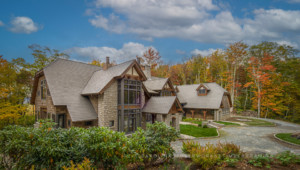
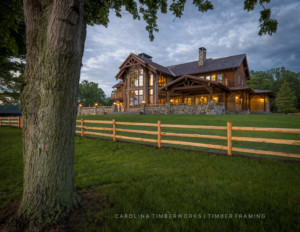

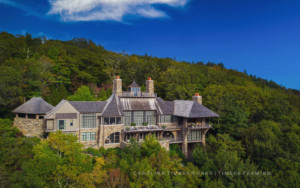
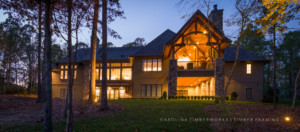
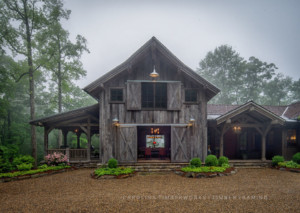

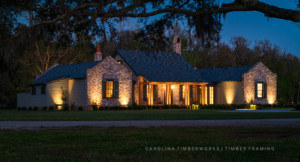
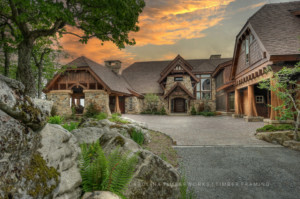
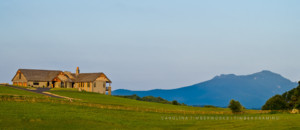

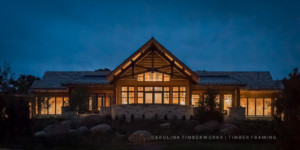
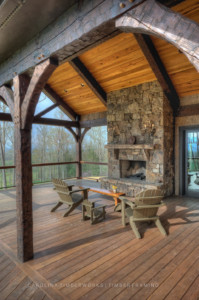
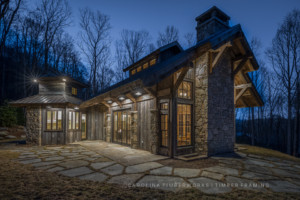
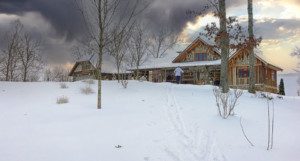
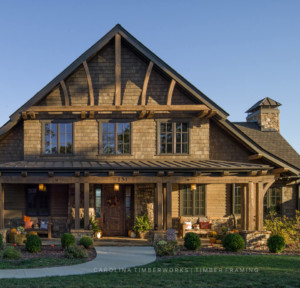
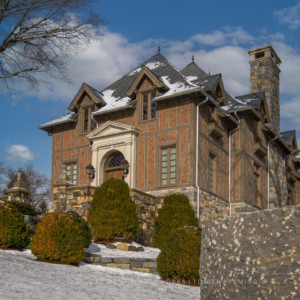
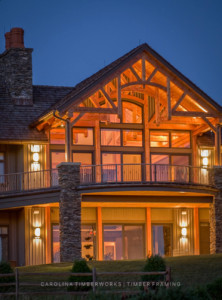
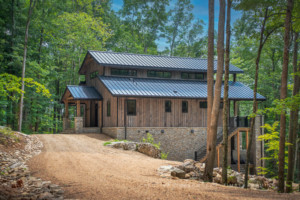
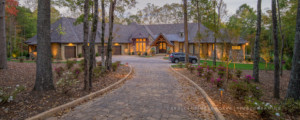

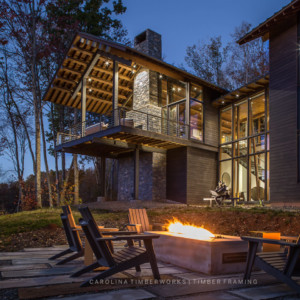
What Does a Timber Frame House Look Like on the Inside?
Here’s where a timber frame house differs. Enter the home, and the structure is visible. Instead of being buried behind sheetrock or plaster, you can see what’s holding up the walls and roof.
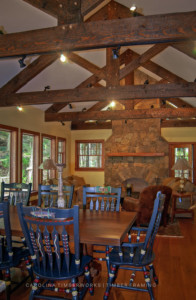
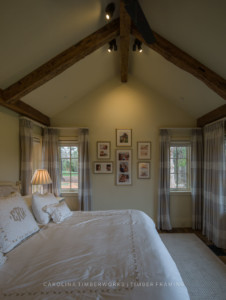
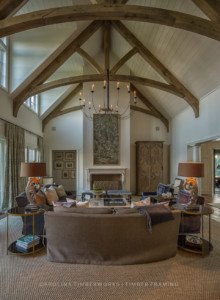
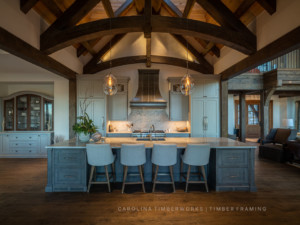

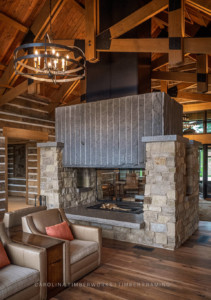
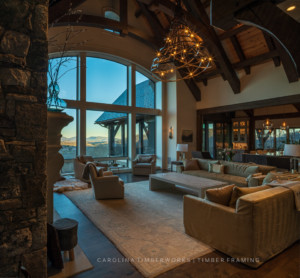
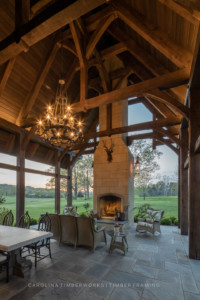
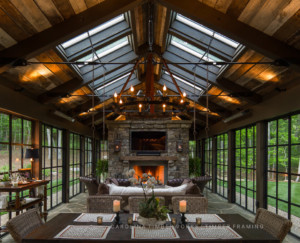
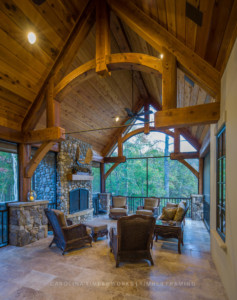
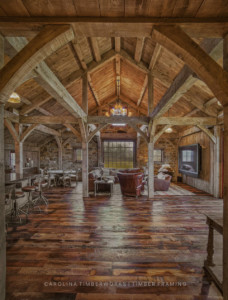

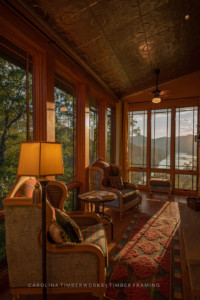
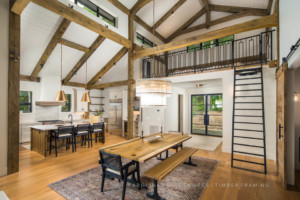
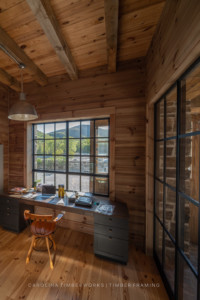
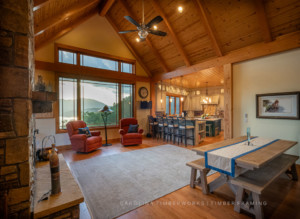
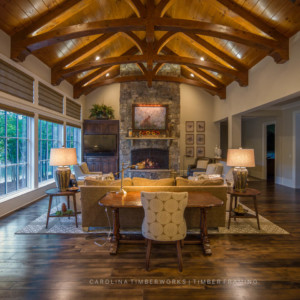
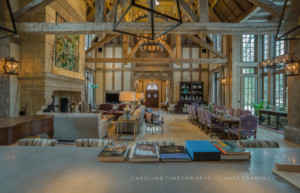
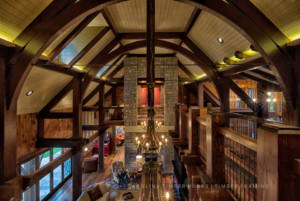
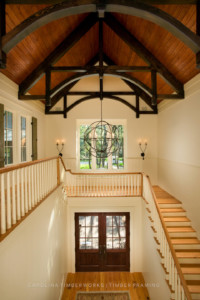
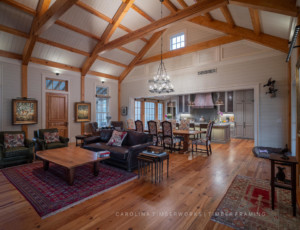
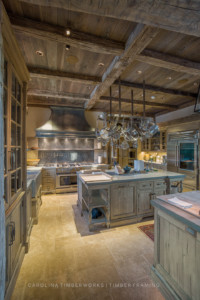
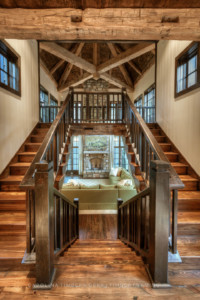
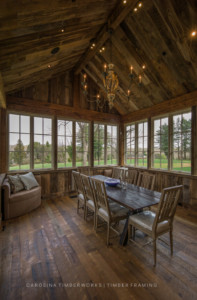
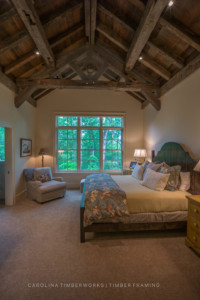
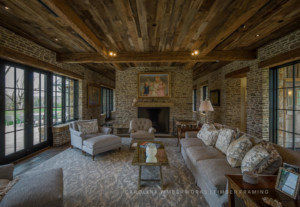
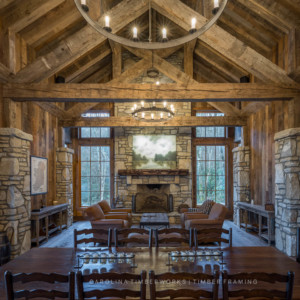
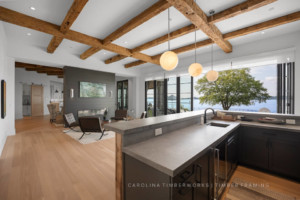
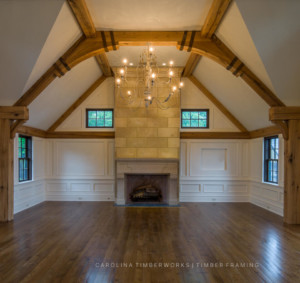
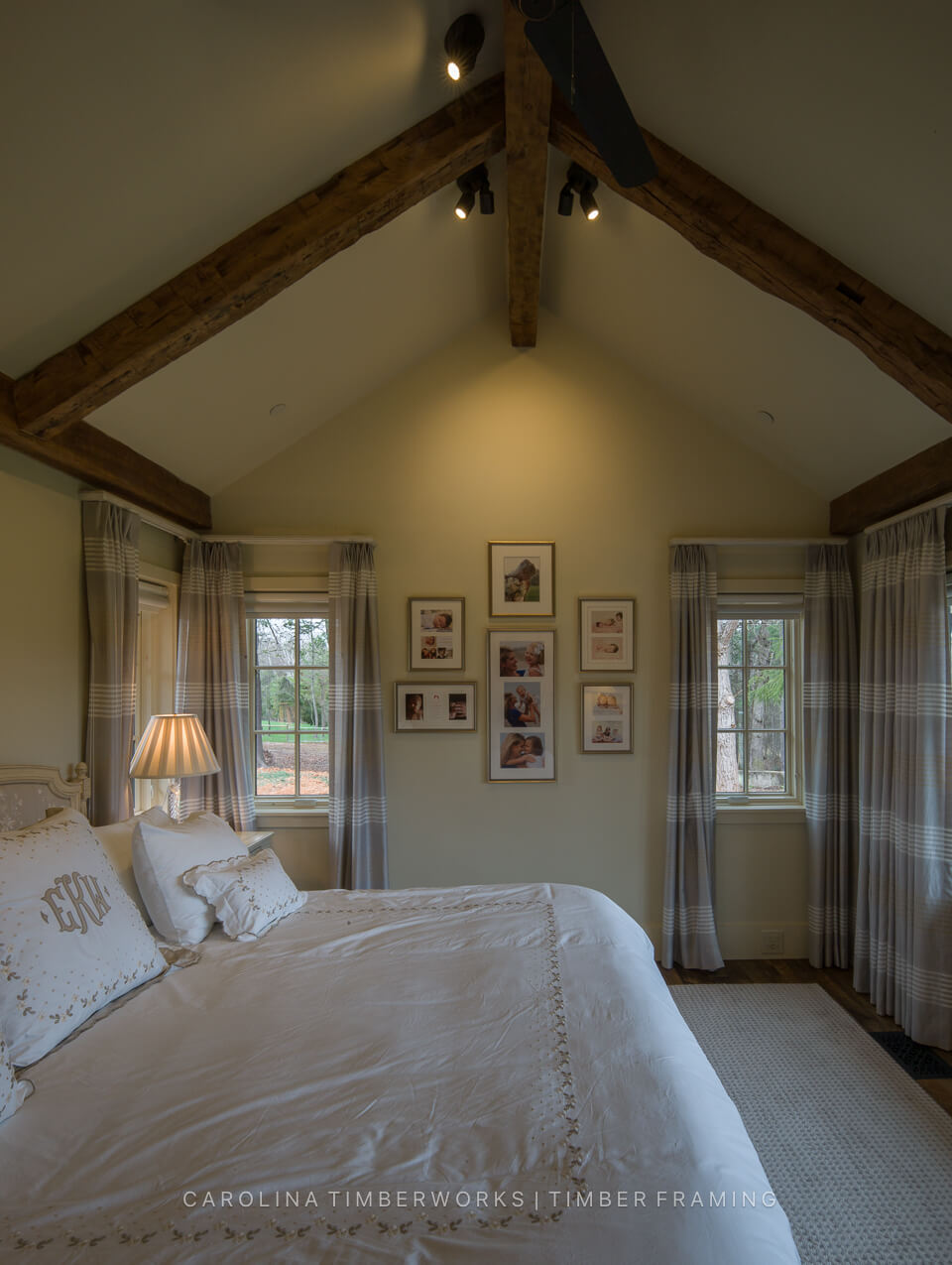
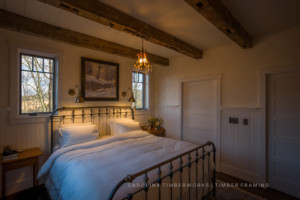
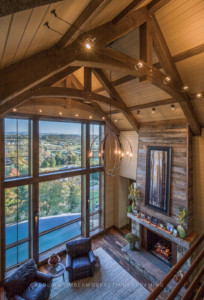
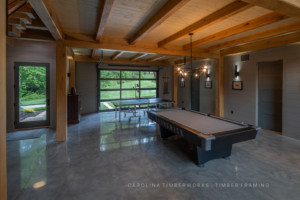
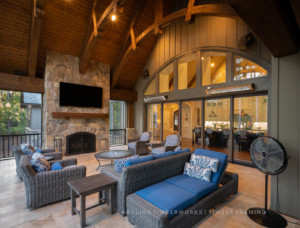
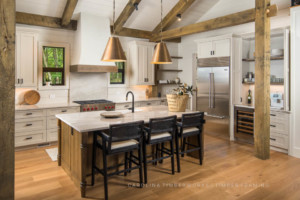
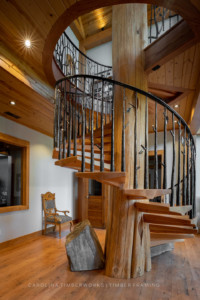
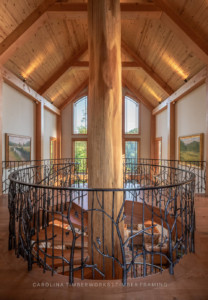
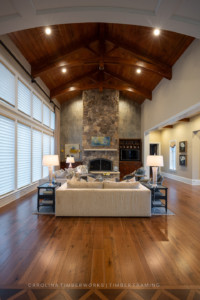
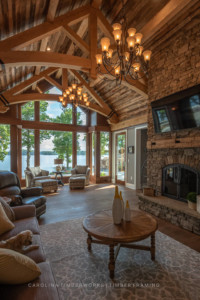
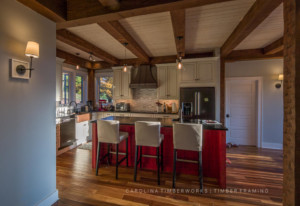

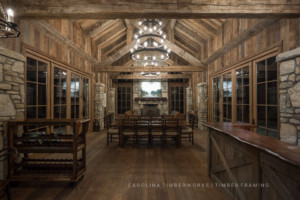
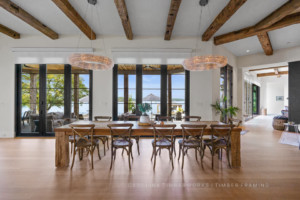
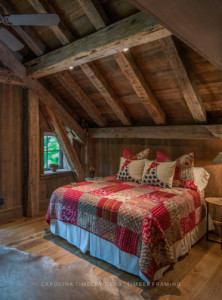
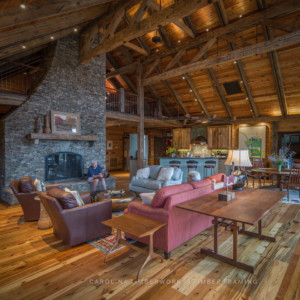
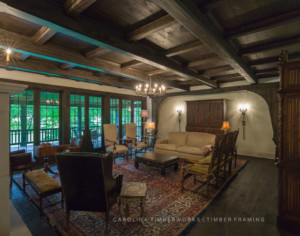
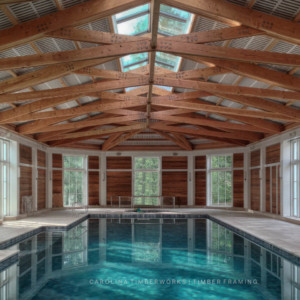
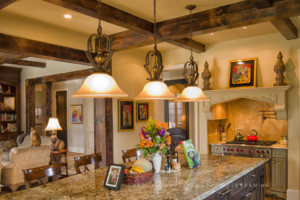
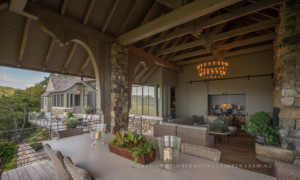
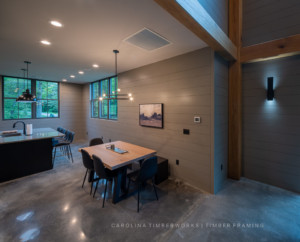
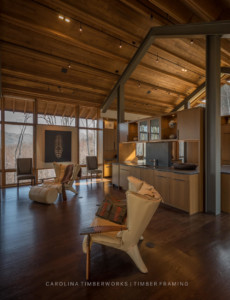
Types of Timber Frame Homes
We build two kinds of timber frame houses: full frames and hybrids.
A full frame is just what it sounds like: the entire structure is a timber frame, like this:
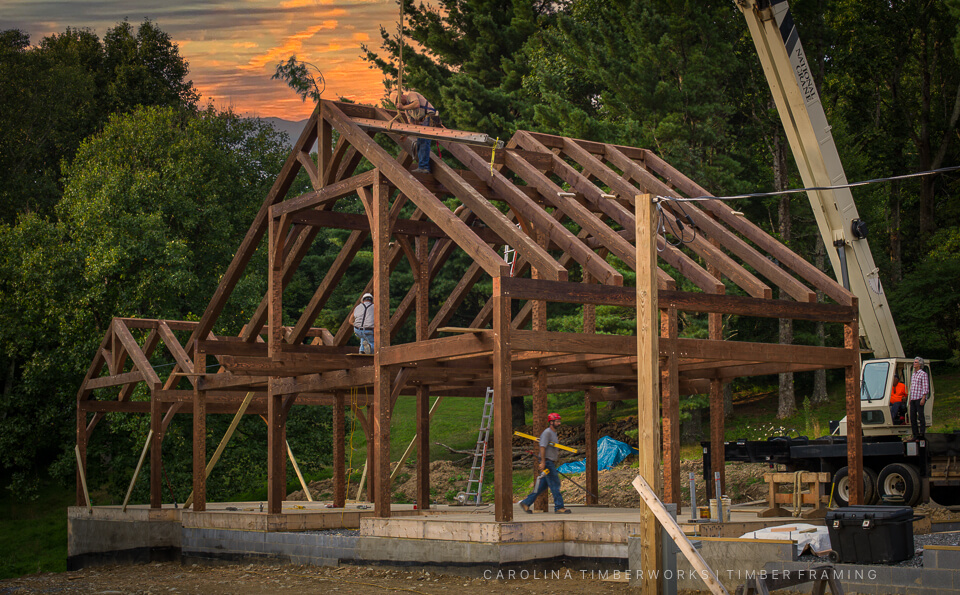
A hybrid timber frame home contains timber framing in only certain parts of the house. A hybrid timber frame house might have a timber frame core (ie. a great room and kitchen), a timber frame entry and/or covered porch, and the rest of the house would be built using conventional construction (2×4’s and 2×6’s).
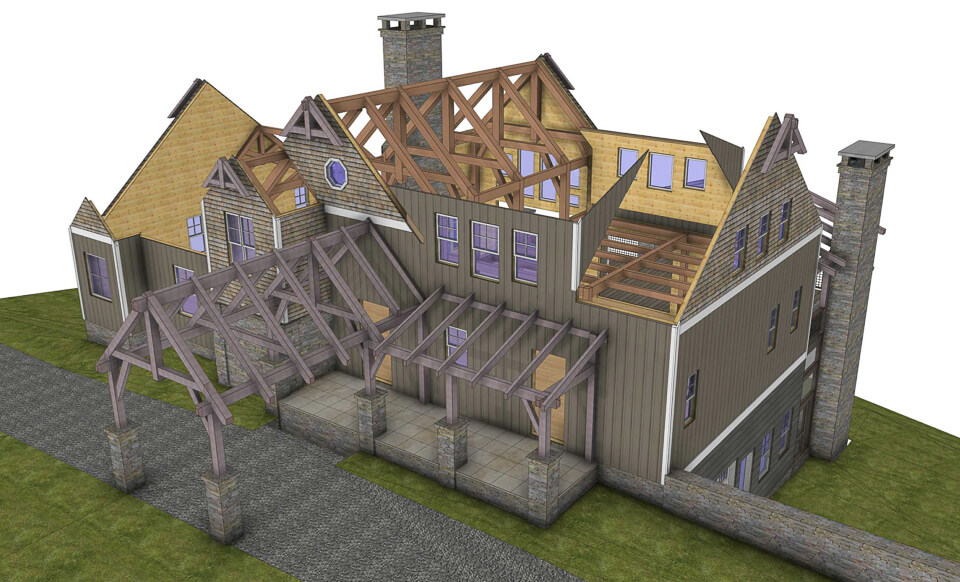
How Does the Process Work?
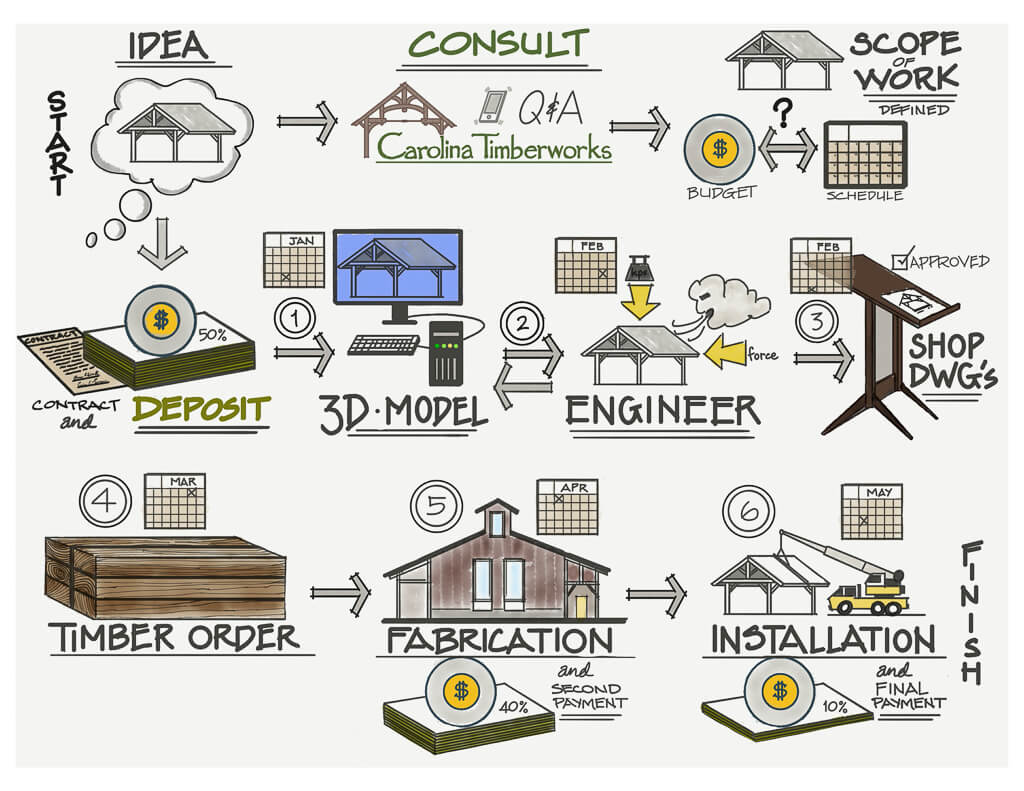
Are Timber Frame and Post and Beam Houses the Same Thing ?
Both post and beam homes and timber frame homes are built using large, heavy timbers that serve as the structural skeleton of the building. The primary difference between a post and beam and a timber frame is the way the posts and beams are connected.
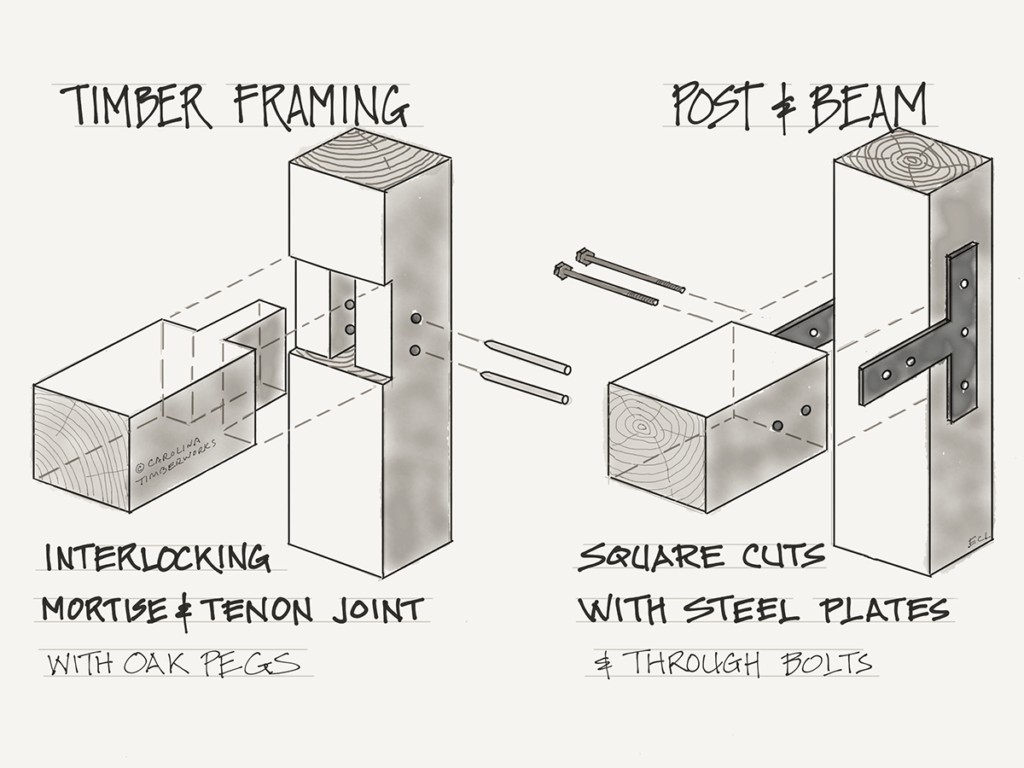
Both post and beam barns and timber framed barns offer a proven and durable building method. However, post and beam buildings tend to be more utilitarian, while timber frame buildings are, in our opinion, more compelling, durable, and beautiful.
Should I Hire an Architect?
Probably.
If it’s a relatively simple timber frame and the local building officials are easy to work with, we’re happy to design and engineer the timber frame with you (or work with your design professional).
Over the last 20+ years, we’ve worked on a number of successful projects without an architect. That said, an architect can bring a wealth of knowledge, expertise, and creativity to your home.
Over the years, we’ve been part of projects designed by talented architects from around the county, and acknowledge that we’ve learned a lot from them. We’ve developed a real appreciation for what architects bring to both the process and final product. Sure, their services aren’t inexpensive—but why do you think people hire architects?
Here are some of the benefits of working with an architect:
- Design expertise: Architects are trained (and licensed) professionals who have a deep understanding of building design and construction. They can help you turn your vision for your home into a reality, taking into account things like function, aesthetic, budget, and building codes.
- Problem-solving: Architects can help you navigate the inevitable challenges that arise during building, whether it’s obtaining apples-to-apples bids from contractors and suppliers, navigating the sometimes byzantine bureaucratic permitting process, or coming up with solutions to unexpected site conditions.
- Contract administration: Architects can also serve as your advocate during the construction process, making sure that your builder and subcontractors follow the plans and specifications, and ensuring that the work is done to a high standard.
- Cost savings: Years ago, we built a great house on a trout stream from only two 8-1/2″ x 11″ hand drawings. We know from experience that it ends up costing more than a good set of plans. The thousand details, questions, and challenges will eventually get figured out, but you’ll be paying people on site to stop work and come up with (and call you about) solutions to problems that a good architect figures out in advance (on paper or computers) less expensively.
- Increased value: A well-designed (and sited) home can add value to your property. More importantly, it will add value to your life: you’ll enjoy looking at, being in, and using your home, much more.
How Much Does a Timber Frame Home Cost?
Much like vacations, dream weddings, or the cost of higher education, the cost of building a timber frame home varies widely. Here are some of the factors that will determine the cost: the size of the timber frame, the species and grade of the wood, the complexity of the design, and the location.
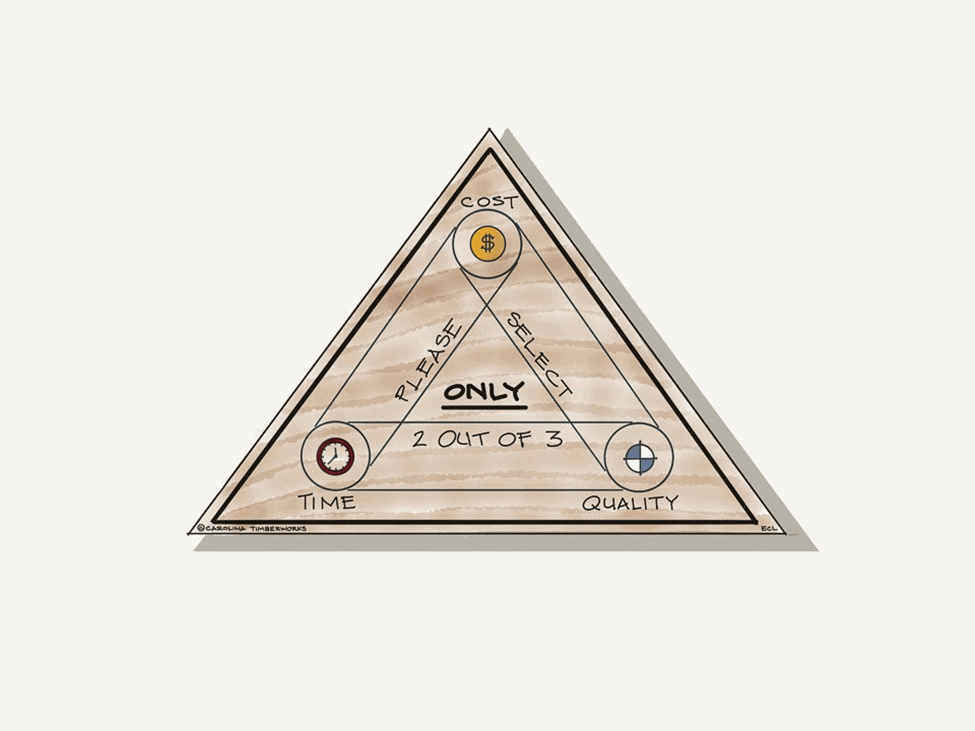
The bad news: we don’t know an accurate cost per square foot rule of thumb. We’ve heard it said that the cost of a timber frame home is about as much, or a bit more than, a well-constructed similarly sized and appointed custom home. In our experience timber framing always costs more than conventional construction. The good news? When you calculate the cost per pound, it seems like a really good deal. All kidding aside, until the timber frame is designed and engineered, everything is just a guess.
How About Small Timber Frame Houses?
They may be small, but they live big.
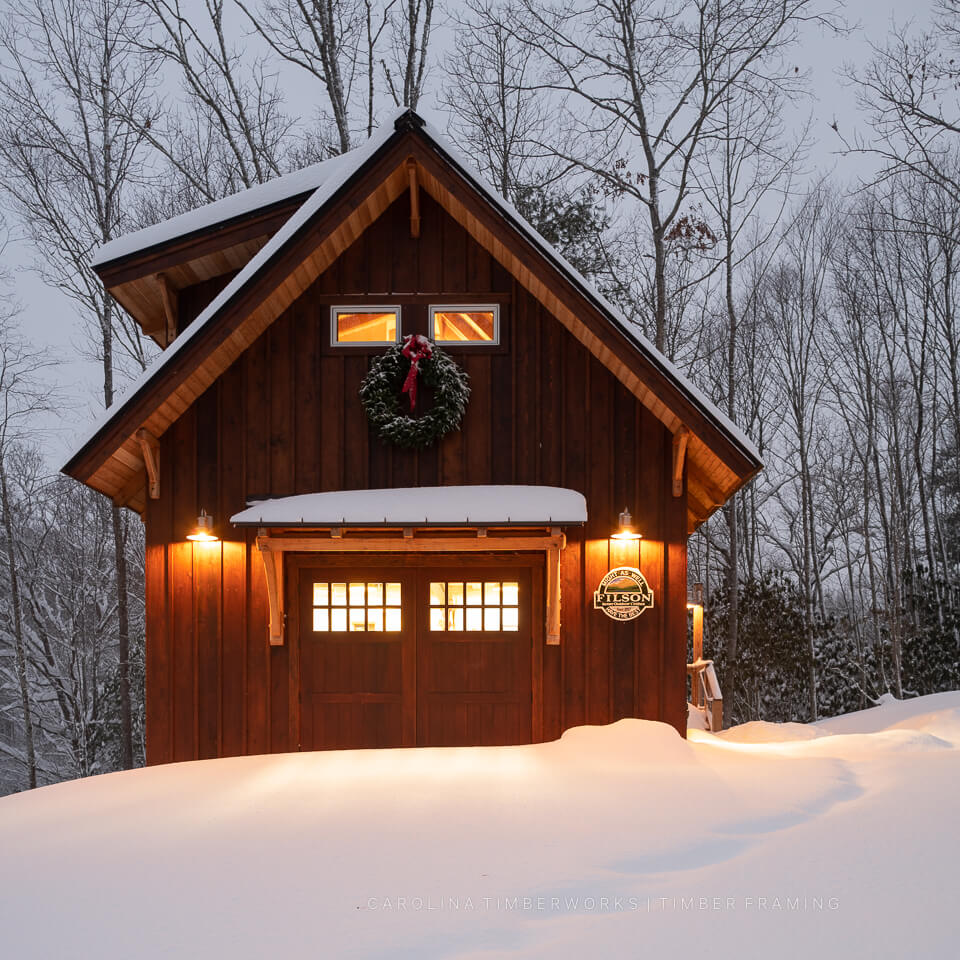
What Are the Advantages of Smaller Timber Frame Houses?
In addition to a lower price tag, smaller houses typically require less time and money to heat and cool, maintain, and clean. Sometimes a smaller home can be sited in places or lots that simply wouldn’t fit a larger house. Finally, we’d argue that well designed smaller houses foster creative thinking, thoughtful use of space and resources, and can lead to more conscious and simplified living.
Why Do Smaller Houses Cost More per Square Foot?
Certain relatively fixed and expensive costs (survey, engineering, permit, foundation, kitchen, bathroom(s), septic and well) are spread out over a smaller area, making the cost per square foot higher.
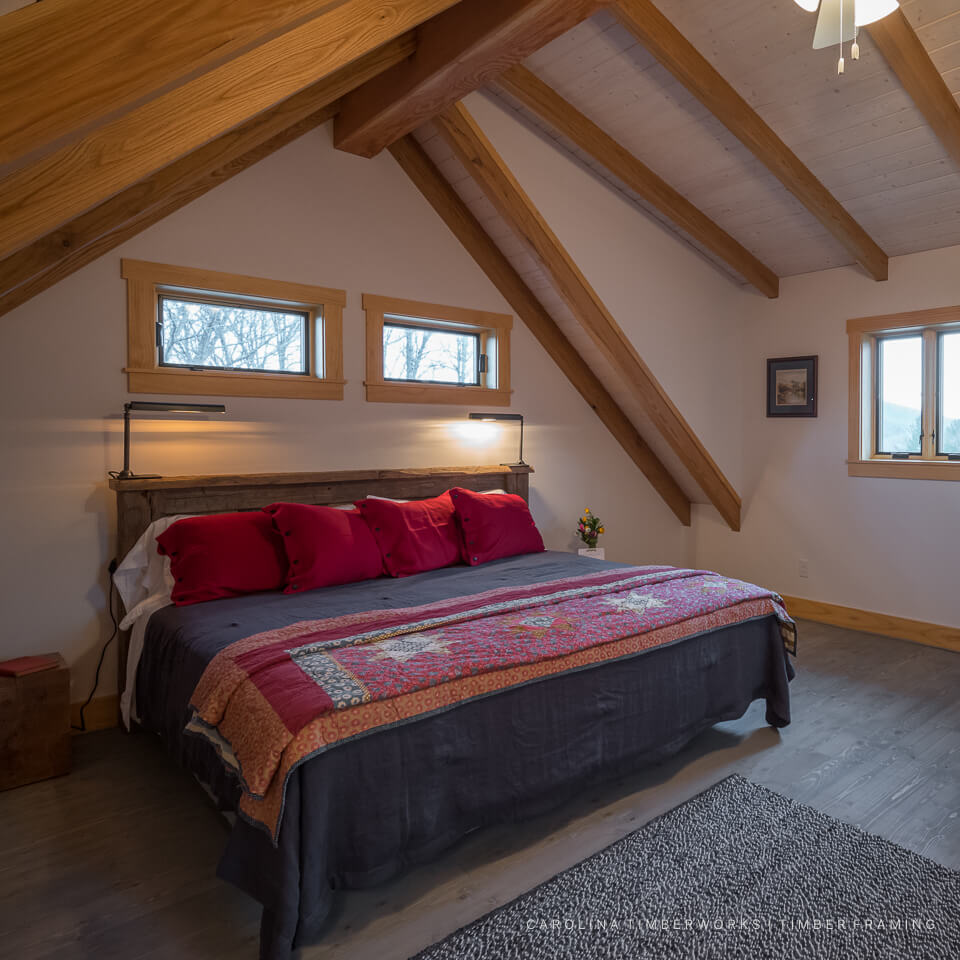
How Do You Insulate a Timber Frame?
Here are three ways (not very good, good and better) to insulate a timber frame home:
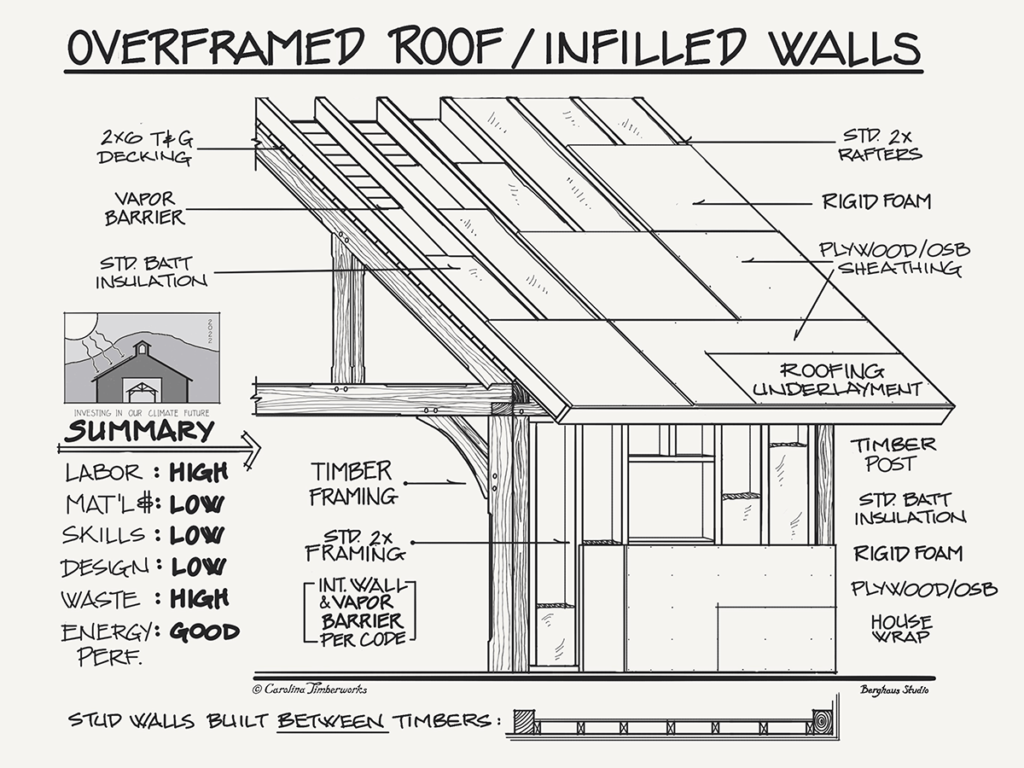
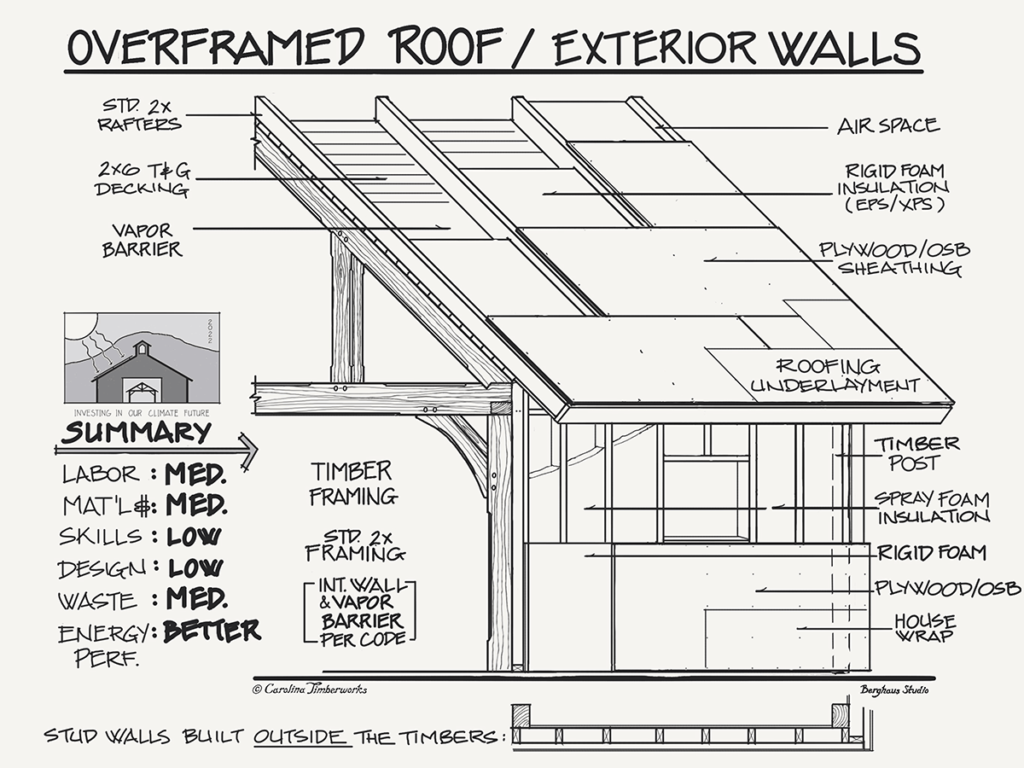
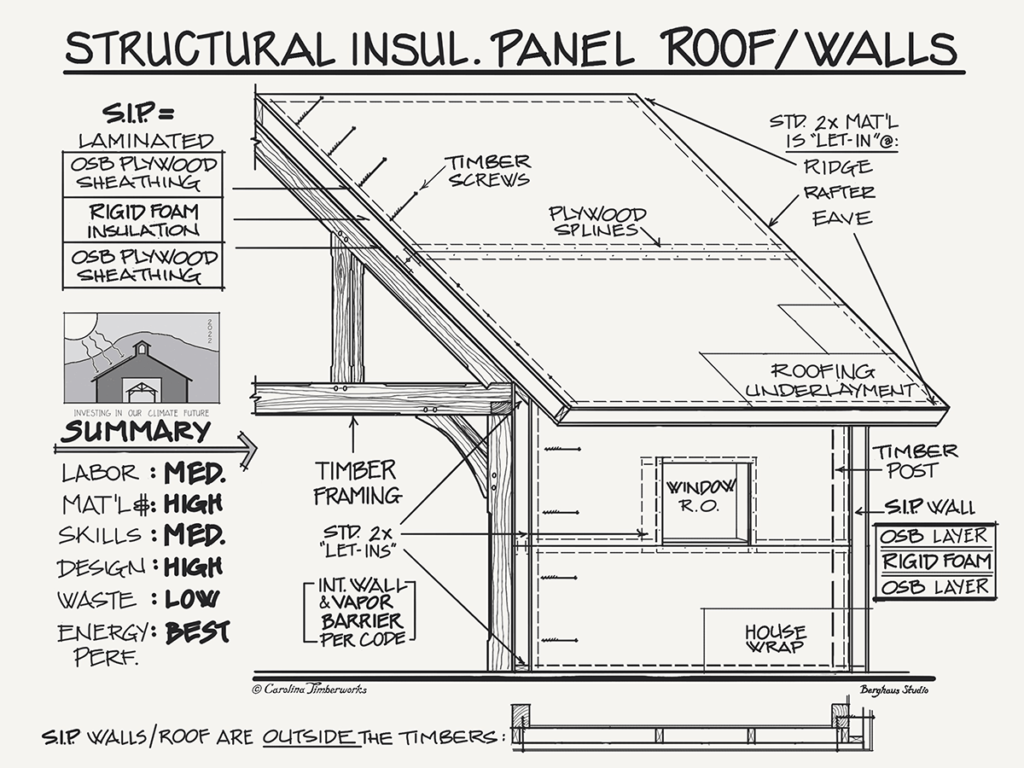
What Are the Different Timber Frame Truss Styles?
Wood trusses, whether structural or decorative, are a collection of timbers or members forming one of the principal supports of a roof and framed together so as to give mutual support and prevent distortion from the forces of gravity and wind loads.
We’re guessing that some gorgeous hand drawings would be worth a couple thousand words right about now, so to cut to the chase and see the more common timber frame truss types, click the drawing below:
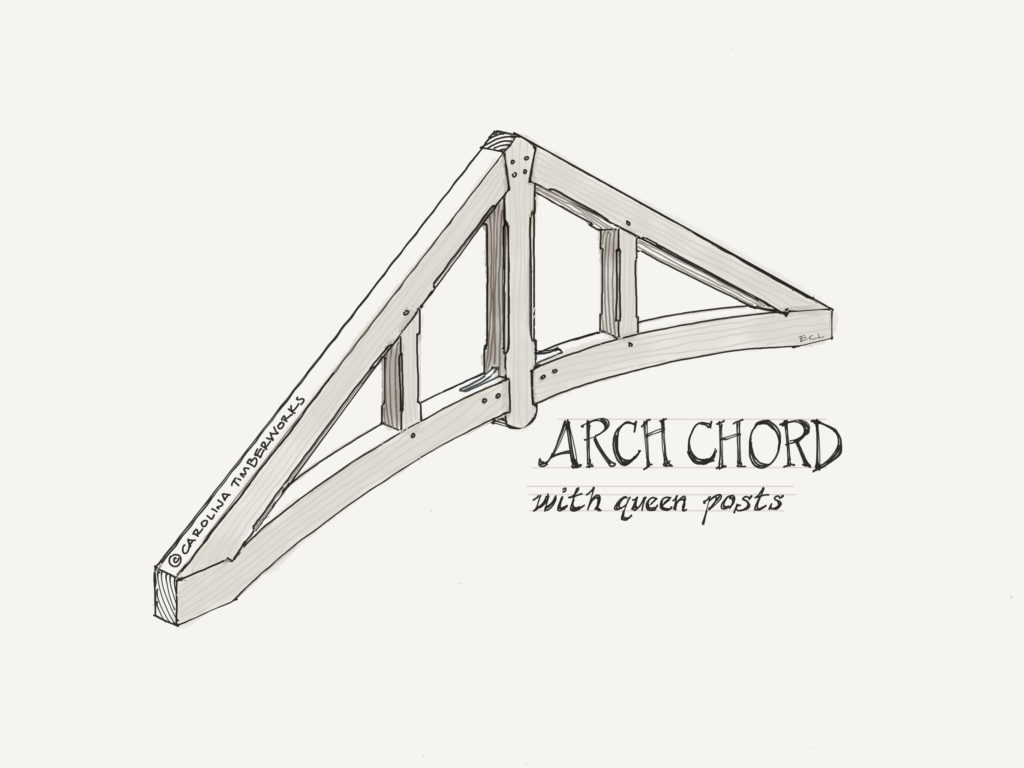
Curious about the timber framing techniques used in this project? Check out our Timber Frame Glossary to understand the terms behind the craft.
Ready to Talk about a Home that Whispers Stories of Tradition and Inspires the Future?
As Seen In


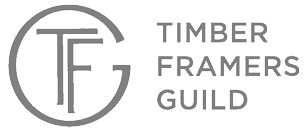

Learn more about our timber frame projects for places we live.